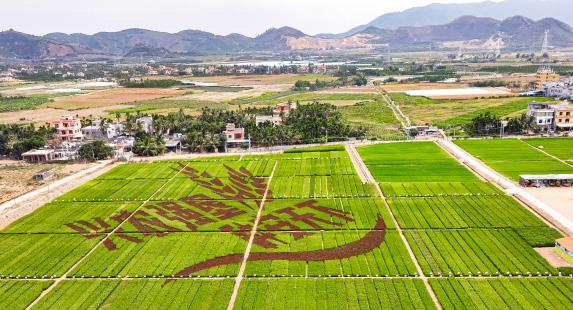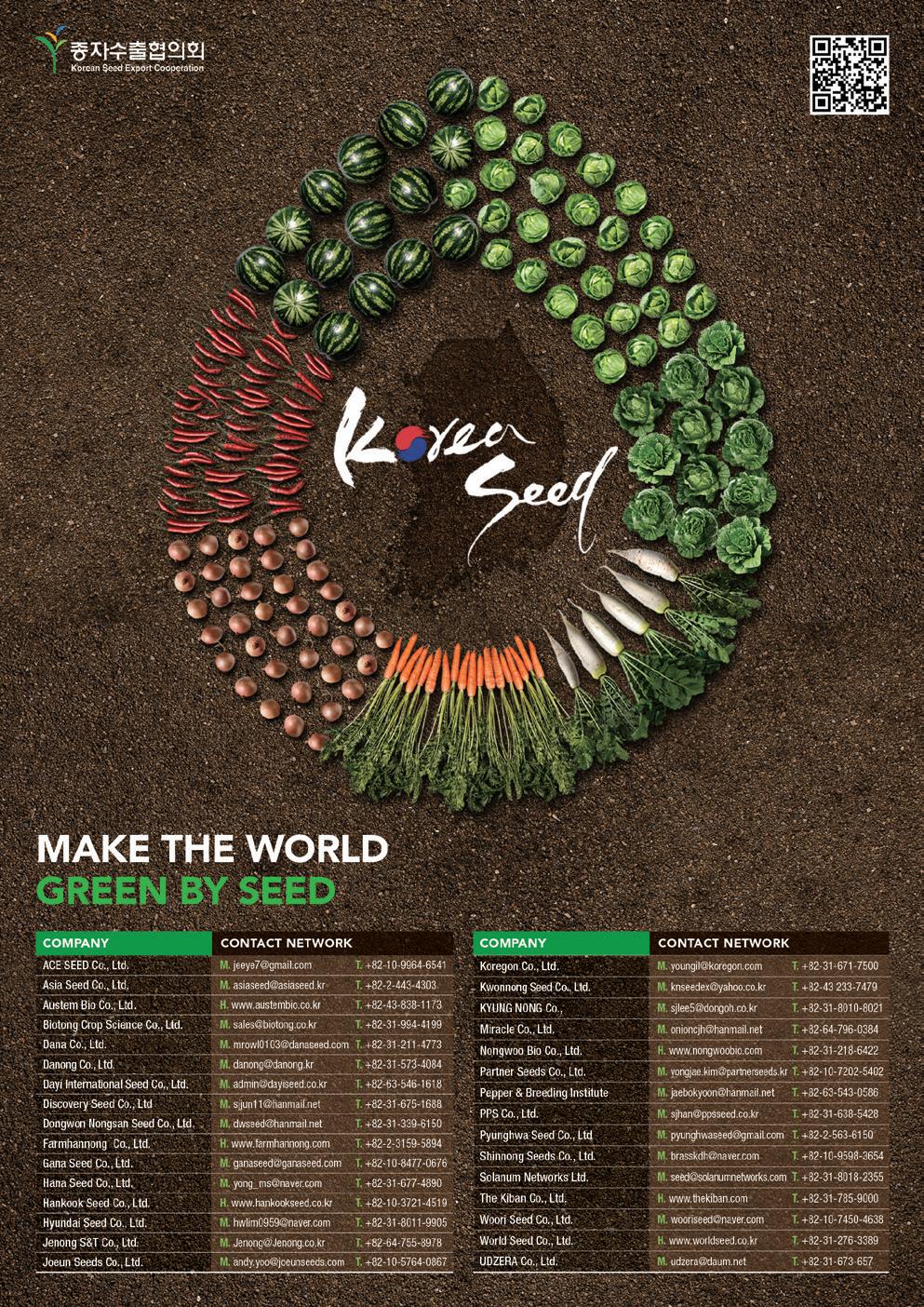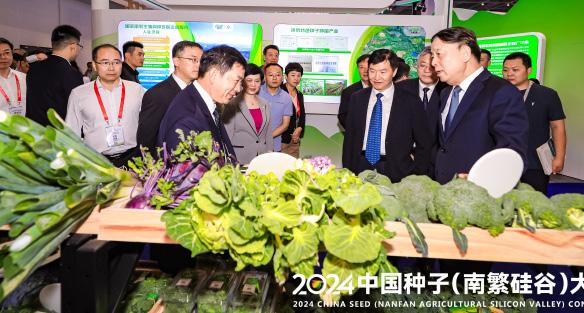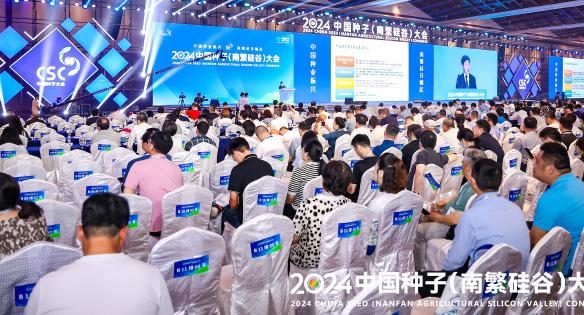
4 minute read
Considering the China factor
Showcasing Sanya's strength, innovation and development as global seed hub
Anticipation is blossoming for the 29th Asian Seed Congress, jointly hosted by APSA and the China National Seed Trade Association in Sanya, Hainan at the end of this year: 2024 holds special significance as APSA celebrates its 30th anniversary, underscoring its enduring commitment to the seed industry's growth and development. China stands prominently as one of APSA's 'major countries,' boasting substantial representation among its members. In light of these milestones, the CNSTA has graciously provided insights into the dynamic landscape of the China seed industry, outlining the country's pivotal role in shaping regional and global seed markets.
Advertisement
China, with its extensive agricultural history, has witnessed the evolution of seeds from self-multiplication to a thriving seed industry, which now serves as a cornerstone of its agriculture. Emphasizing independent innovation, China's seed sector has entered a new phase of development. Significant advancements in scientific technology include enhancements to the national basic public welfare scientific research system and commercial breeding, fostering deeper collaboration between science and enterprises. Accelerated adoption of biotechnology and information technology has led to breakthroughs in crucial areas such as heterosis utilization, haploid breeding, and cell engineering. Notably, China leads in rice and wheat breeding globally, with numerous high-yield and disease-resistant hybrid corn varieties emerging. Additionally, a wide array of new crop varieties like cabbage, pepper, and cucumber have been successfully developed and promoted. Improved crop varieties now cover over 96% of agricultural land, with domestically bred varieties comprising more than 95%.
China's seed industry plays a pivotal role in ensuring food security on a global scale: The widespread adoption of superior varieties has significantly contributed to China's consistent food harvests and stable agricultural production. Remarkably, despite possessing only 9% of the world's arable land, China supports 20% of the global population, making substantial strides in addressing the world food crisis. The introduction of Chinese hybrid rice, pioneered by the late Prof. Yuan Longping in 1973, stands as a testament to this commitment. Since then, rice yields per mu have surged by over 20%, earning Chinese hybrid rice the moniker "Oriental magic rice" and igniting its dissemination worldwide. Currently, Chinese hybrid rice is cultivated or promoted in over 60 countries, including India, Bangladesh, and Brazil. With an overseas planting area exceeding 8 million hectares annually, its yields surpass even those of local varieties. Recognized by the Food and Agriculture Organization of the United Nations as a preferred technology for augmenting food production, hybrid rice exemplifies China's contribution to alleviating food shortages in developing nations. Through the dissemination of high-quality seeds and advanced technologies, China continues to offer solutions to global food security challenges.
Regulatory Reinforcements: In recent years, the advancements in legal frameworks within China's seed industry have been widely acknowledged. The Chinese government attaches great importance to the development of the seed industry and has issued a series of laws, regulations, policies, and measures to provide a solid legal guarantee for the development of the seed industry. Firstly, laws and regulations have been gradually improved. For example, the fourth revision of the Seed Law expanded the protection scope of new varieties, established an essential derived variety system, and encouraged original innovation. The revision of the Measures for the Administration of the Safety Evaluation of Agricultural Genetically Modified Organisms, the Measures for the Examination and Approval of Major Crop Varieties, the Measures for the Administration of the Production and Operation of Crop Seeds, and the Regulations on the Naming of Agricultural Plant Varieties, along with the issuance of approval standards and testing channels for national-level genetically modified soybean and corn varieties, clarified the requirements for the approval procedures for genetically modified varieties. The issuance of Guidelines for the Safety Evaluation of Gene-edited Plants for Agricultural Use (Trial implementation) and the Rules for the Evaluation of Gene-edited Plants for Agricultural Use (Trial implementation) further standardized the safety evaluation management of agricultural gene-edited plants. Secondly, variety management and market entry are stricter. In terms of major crops such as maize and rice, certification standards are improved in three aspects, such as variety yield, disease resistance, and DNA fingerprinting differential points. The avoidance system of variety approval is also enhanced. In terms of non-major crops, 560 non-compliant varieties such as cucumbers, melons, and sunflowers were canceled. Thirdly, market supervision is more stringent. The government strengthened the connection and cooperation between administrative law enforcement and criminal justice for intellectual property protection, issued the latest judicial interpretation on the trial of infringement cases, and increased the intensity of criminal crackdowns involving illegal seed activities.

China's seed industry remains open to global engagement, with its market value steadily increasing each year, hovering around 120-130 billion yuan. It stands as the world's second-largest seed market after the United States. Crop seed import and export trade has surged, rising from US $133 million in 2000 to US $702 million in 2020, marking a 4.3fold increase. Chinese seeds, including rice, vegetables, flowers, beans, and tubers, are increasingly finding their way into global markets.


Chinese seed enterprises are actively elevating their presence on the global stage, bolstering research and development investments and accelerating mergers and acquisitions. Currently, two Chinese seed companies, Syngenta Group China and Longping High-tech, rank among the top ten globally. Moreover, under the guidance of national seed associations like CNSTA and CSA, numerous small and medium-sized enterprises are actively engaging in international cooperation and exchanges. China has also been increasingly hosting international seed industry events, fostering exchanges and cooperation between its seed industry and the global market. With these growing interactions, China has emerged as a significant player in the global seed market, evolving alongside the global seed industry.
Furthermore, China's seed industry is committed to sustainable development, prioritizing the harmonious coexistence of economic, social, and environmental aspects. Emphasizing biodiversity conservation, it seeks to maintain ecological balance by responsibly utilizing and safeguarding germplasm resources. The industry is spearheading the adoption of digital agriculture, leveraging technologies such as big data, Internet of Things, and artificial intelligence to enhance germplasm resource monitoring and management, improve seed selection and breeding efficiency, and enable digitalized management and intelligent decisionmaking throughout the seed industry chain. Encouraging industrial green transformation, China aims to achieve sustainable development in the agricultural industry chain by enhancing variety resistance, improving agricultural production efficiency, and reducing agricultural non-point source pollution.
In summary, the development of China's seed industry embodies a narrative of independent innovation, food security assurance, legal empowerment, openness, and sustainable growth. Importantly, this journey is intricately intertwined with the global and Asia-Pacific seed industry. Looking ahead, China's seed industry remains committed to scientific and technological innovation, advancing green practices, fostering international collaboration, and collectively driving the prosperity and harmonized development of the global seed sector. We extend a warm invitation to join us at the Asia Seed Congress in Sanya, China, from December 2-6, 2024.




